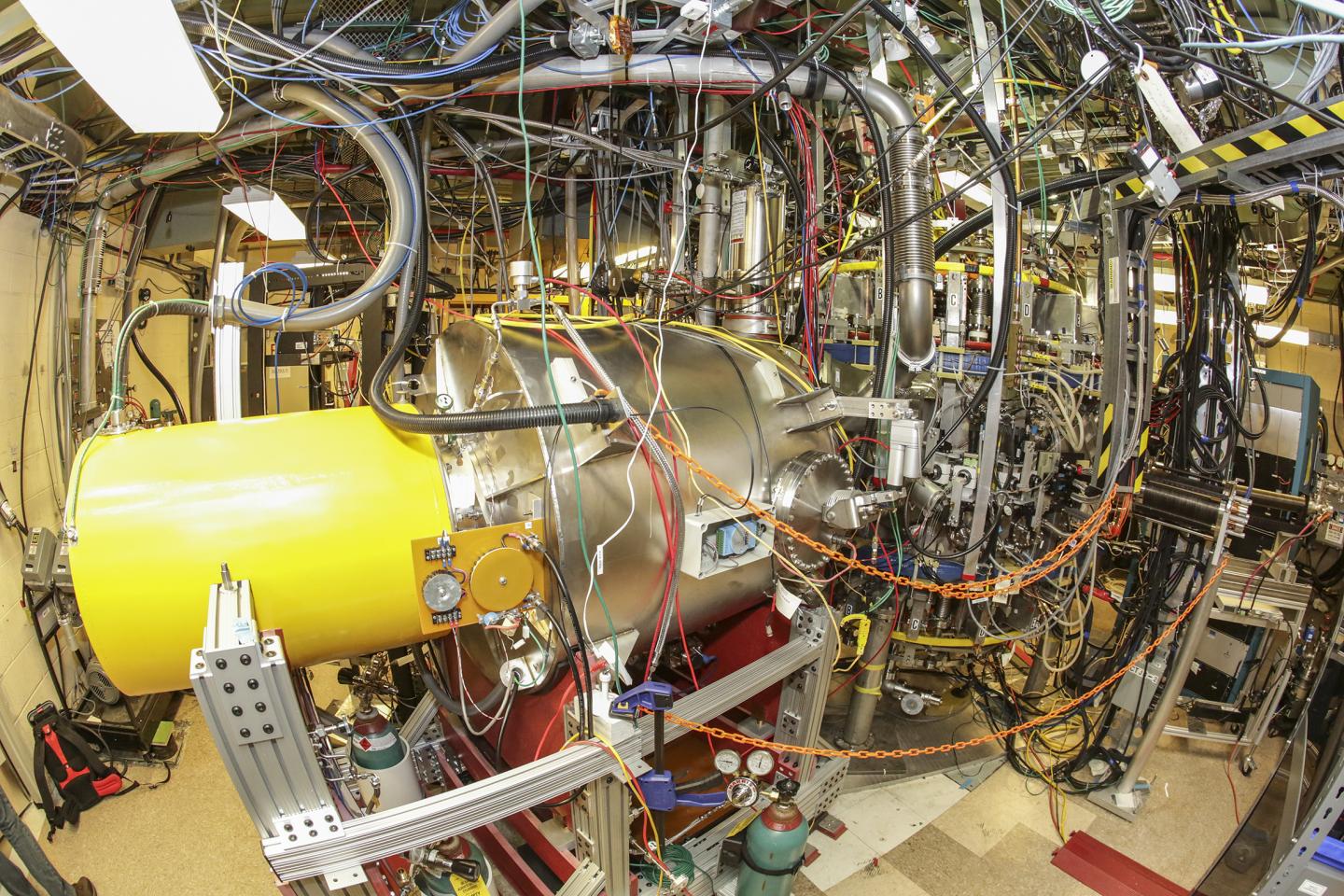
Credit: Elle Starkman/PPPL Office of Communications
Lithium, the light silvery metal used in everything from pharmaceutical applications to batteries that power your smart phone or electric car, could also help harness on Earth the fusion energy that lights the sun and stars. Lithium can maintain the heat and protect the walls inside doughnut-shaped tokamaks that house fusion reactions, and will be used to produce tritium, the hydrogen isotope that will combine with its cousin deuterium to fuel fusion in future reactors.
At the U.S. Department of Energy’s (DOE) Princeton Plasma Physics Laboratory (PPPL), researchers have completed a three-year upgrade of the Lithium Tokamak Experiment — now called the Lithium Tokamak Experiment-Beta (LTX-β) — a unique device that will test the ability of the metal to maintain the heat and protect the walls of the now-more-powerful tokamak.
Neutral beam injector
The upgrade, funded by the DOE Office of Science, installed a neutral beam injector — on long-term loan from Tri Alpha Energy, now TAE Technologies — to heat, fuel and increase the density of the plasma. Other improvements include an increase in the magnetic field that confines the plasma, and installation of new lithium systems. The improvements bring conditions in the experiment closer to those in a fusion reactor, said Dick Majeski, principal investigator of the experiment.
The novel device, which uses a coating of lithium to cover the interior wall of the small tokamak, had prior to the upgrade become the first to keep temperature constant from the hot, central core of the plasma to the normally cool outer edge. “The machine is now ready to exploit the full capability of the upgrade,” said Phil Efthimion, head of PPPL’s Plasma Science and Technology unit, which oversees the experiment.
Fusion combines light elements in the form of plasma — the hot, charged state of matter composed of free electrons and atomic nuclei — that generates massive amounts of energy. Scientists are seeking to replicate fusion on Earth for a virtually inexhaustible supply of power to generate electricity.
To complete the upgrade, the team produced 500 kilowatts of neutral beam power while increasing the strength of the magnetic field that confines the plasma by two-thirds, and covering the walls of the tokamak with a lithium coating; the seemingly magic metal absorbs stray plasma particles and keeps them from bouncing back into the core of the plasma and cooling it down. The team further raised the neutral beam power to over 600 kilowatts, increasing the heating power of the machine by a factor of 10.
Still maintain good confinement?
The next test is whether the upgraded machine can maintain good confinement and constant temperature in far hotter plasmas, with stronger magnetic fields. The beam upgrade will keep the density from dropping and demonstrate whether the hotter and more energetic plasma can still be controlled.
Construction of the upgrade called for steps that included installation of a stronger power supply and a new lithium evaporator and was “a difficult task to accomplish,” Majeski said. “Everyone worked very hard. We got a lot of help from the laboratory’s NSTX-U [National Spherical Torus Experiment-Upgrade] engineering team.” Tom Kozub of the team oversaw the engineering effort and physicist Dennis Boyle ran the device when it met the operating requirements.
Collaborating on the LTX-β are scientists from eight research centers across the country: Oak Ridge and Lawrence Livermore National Laboratories; Princeton University; University of California, Los Angeles; University of Wisconsin-Madison; University of Washington; and University of Tennessee, Knoxville.
###
PPPL, on Princeton University’s Forrestal Campus in Plainsboro, N.J., is devoted to creating new knowledge about the physics of plasmas — ultra-hot, charged gases — and to developing practical solutions for the creation of fusion energy. The Laboratory is managed by the University for the U.S. Department of Energy’s Office of Science, which is the largest single supporter of basic research in the physical sciences in the United States, and is working to address some of the most pressing challenges of our time. For more information, please visit science.energy.gov.
Media Contact
John Greenwald
[email protected]
Original Source
https:/




